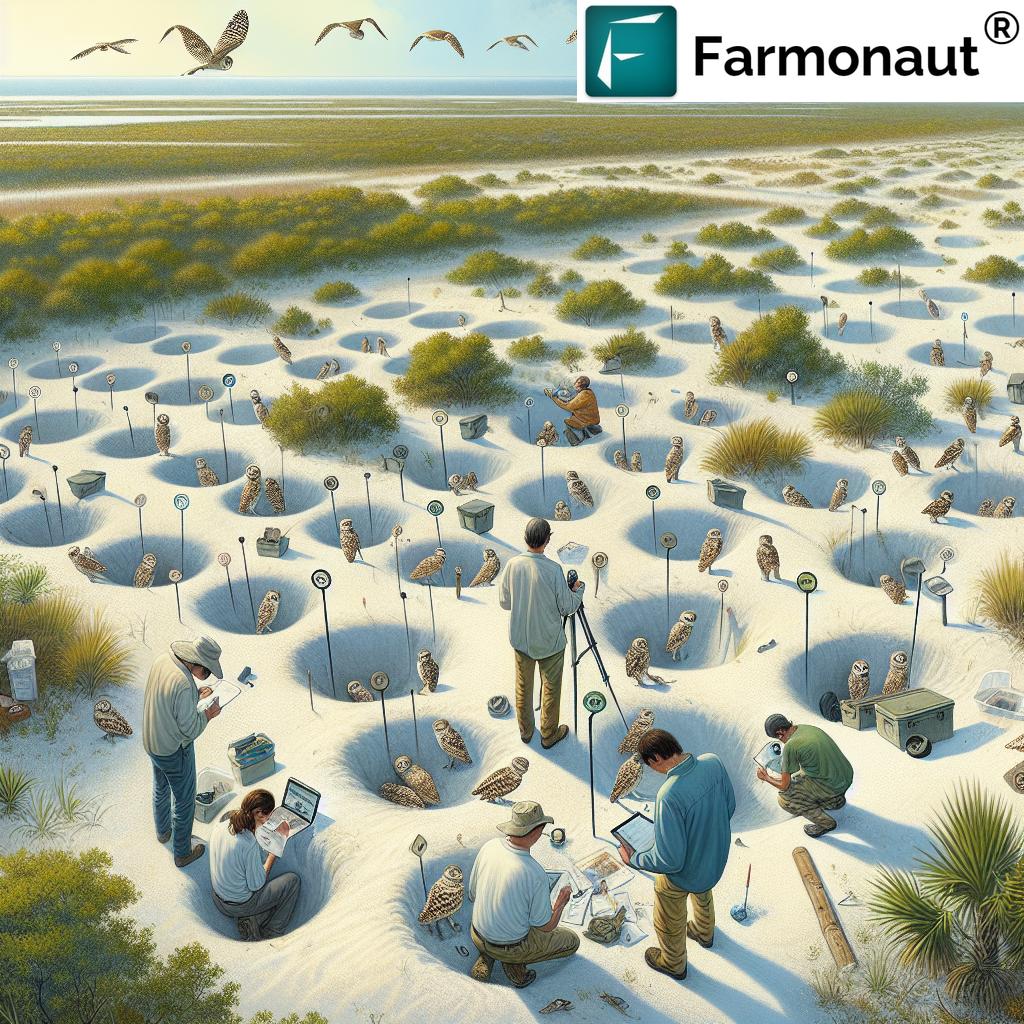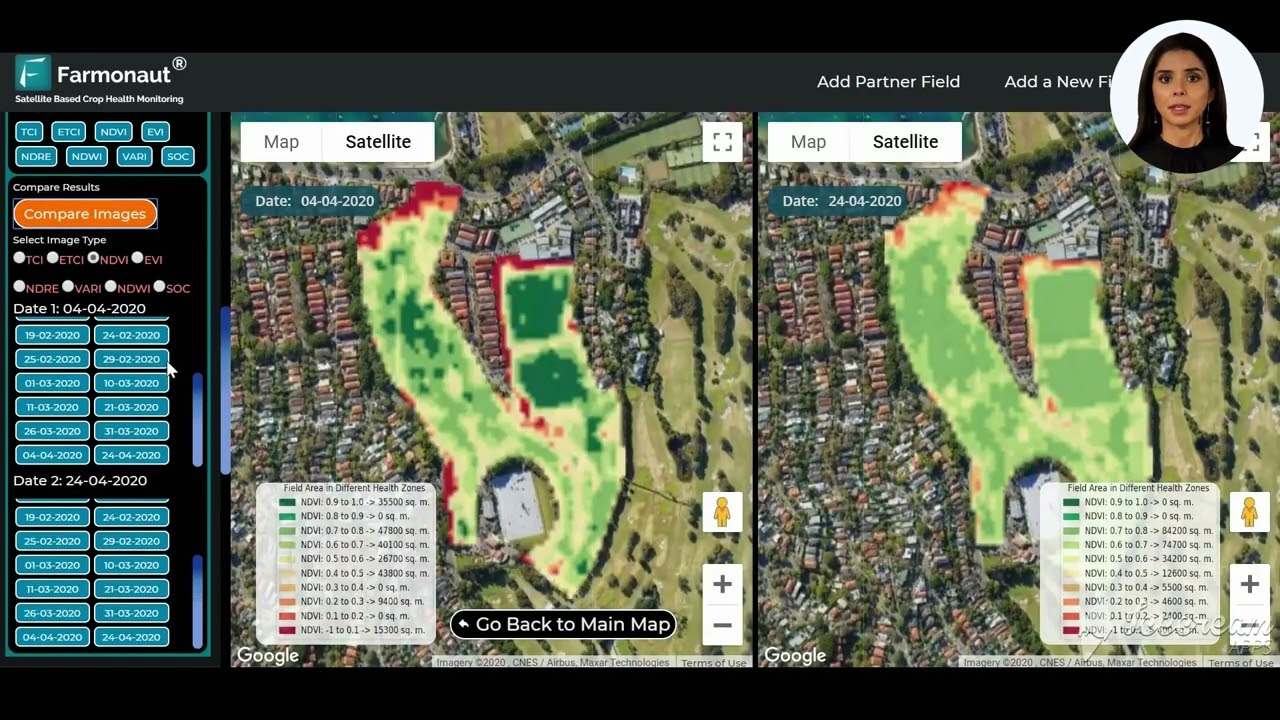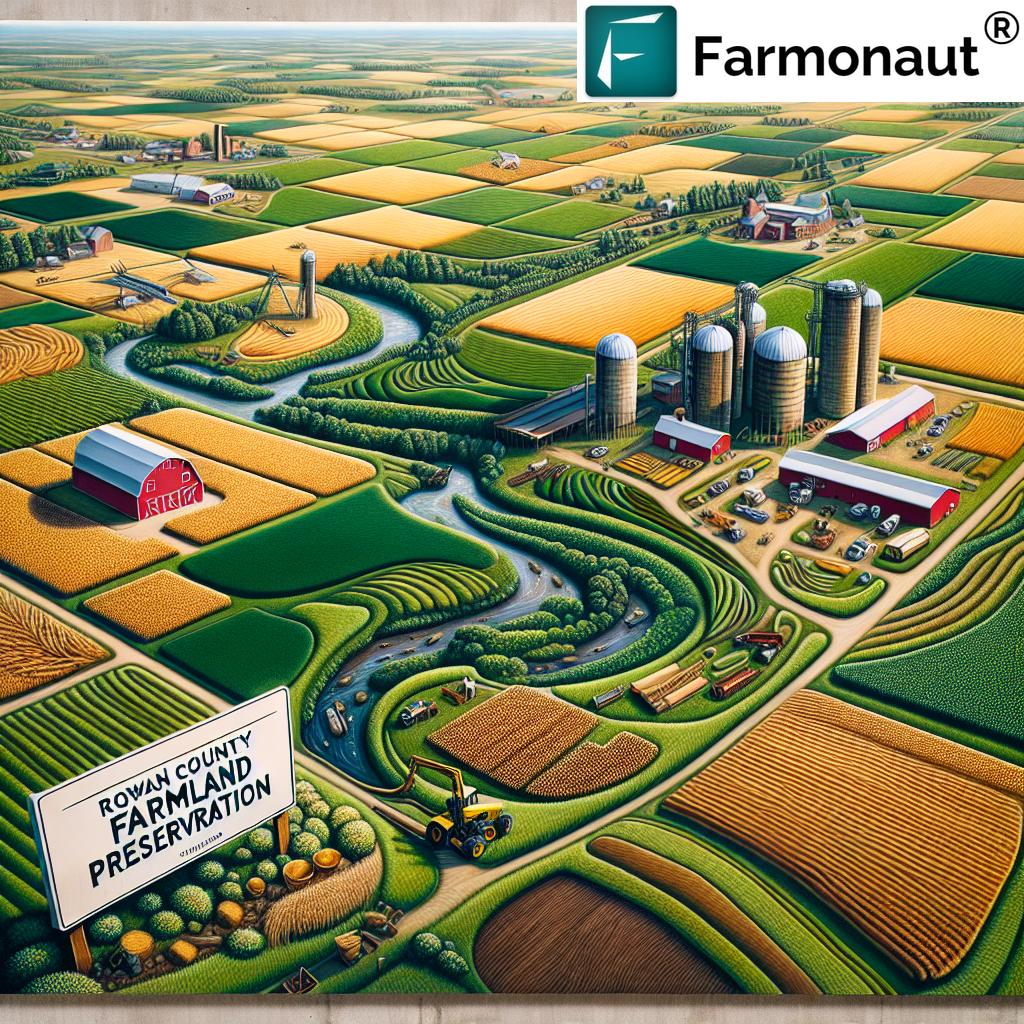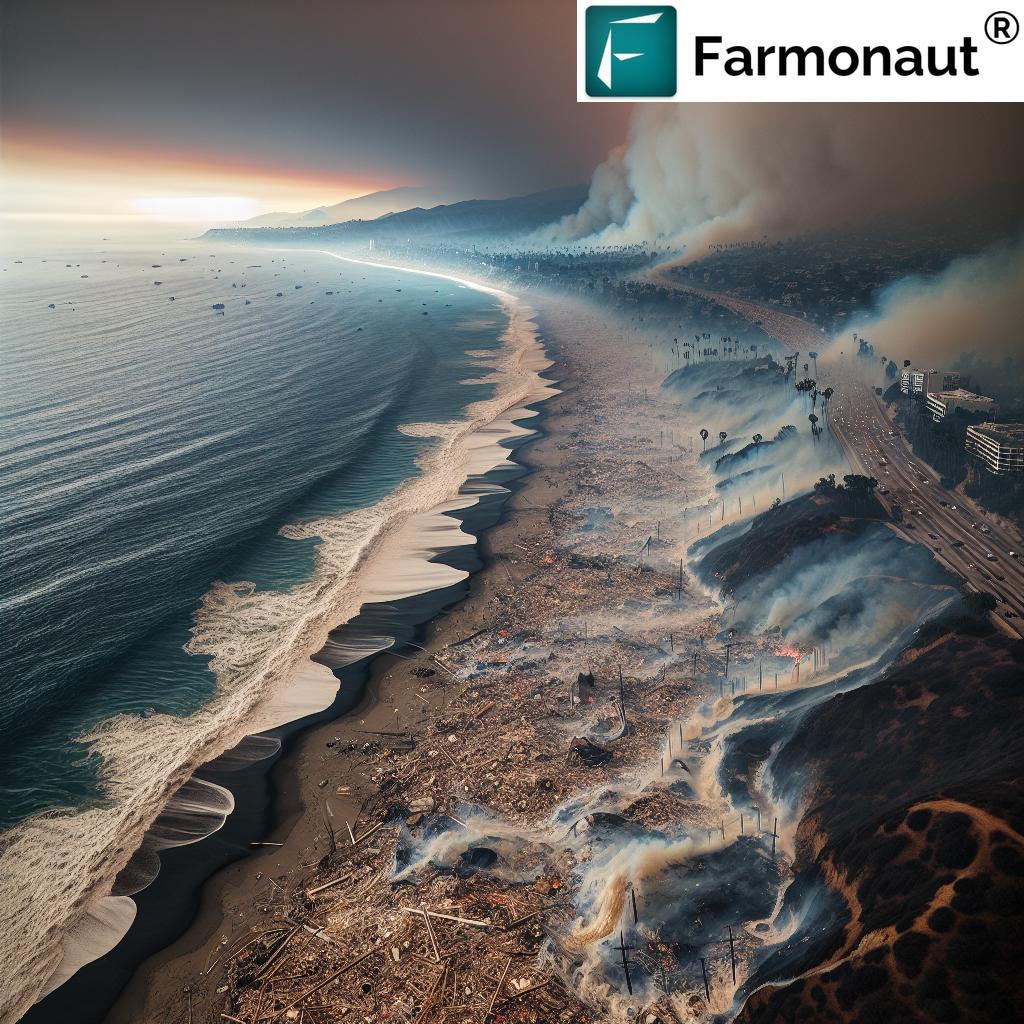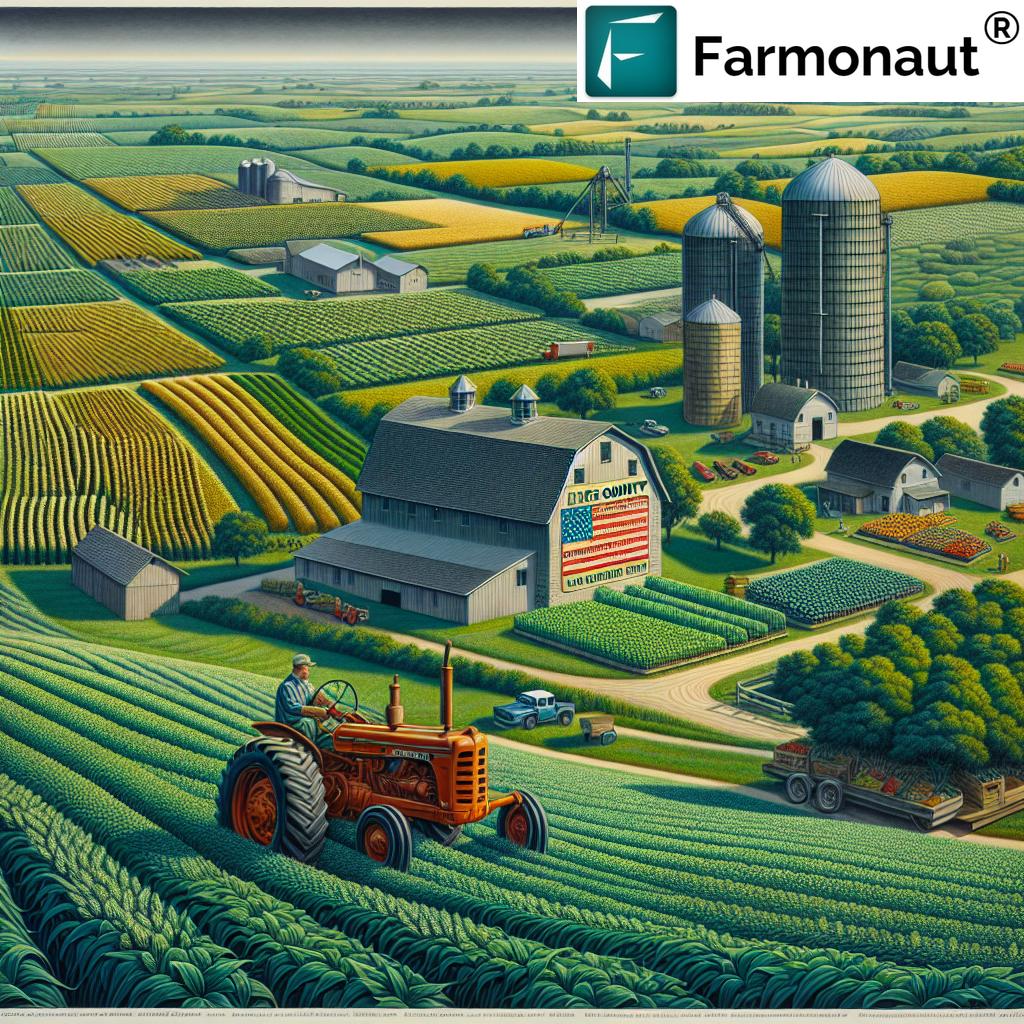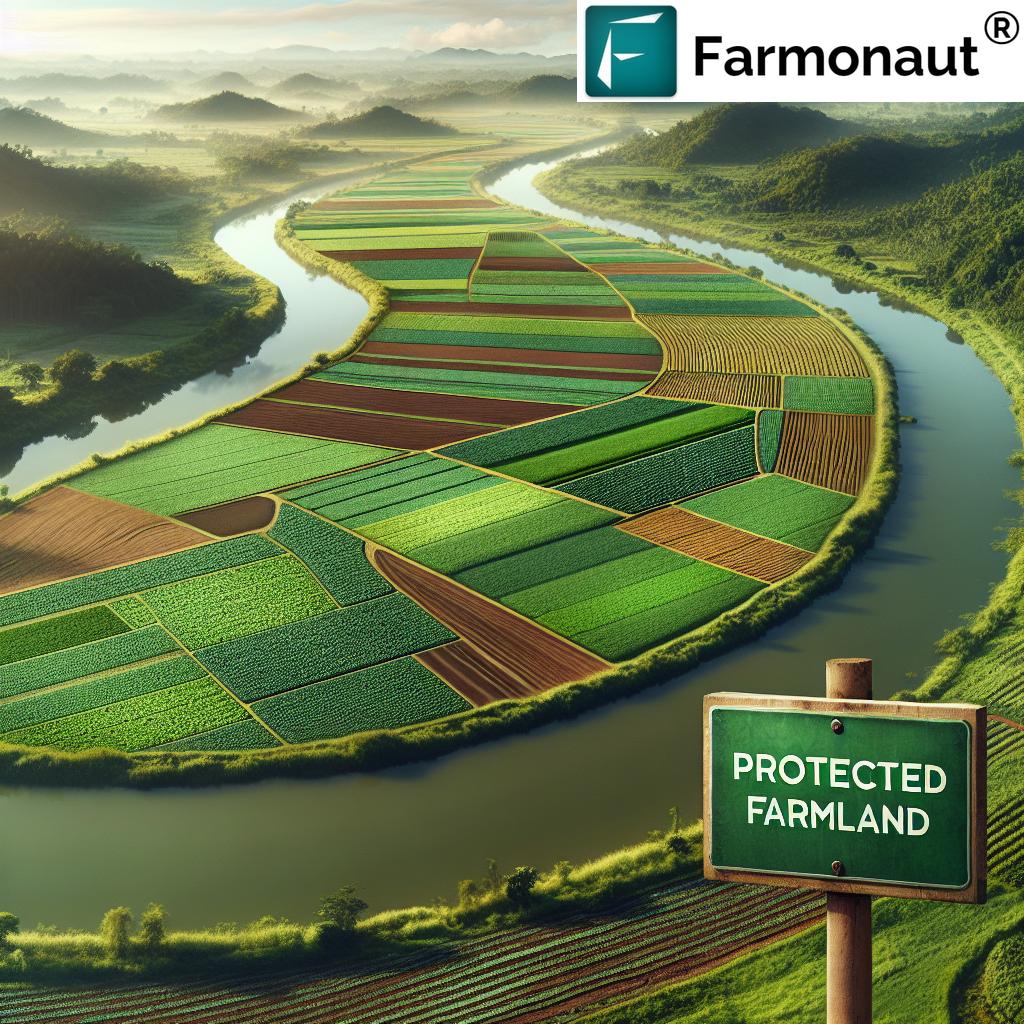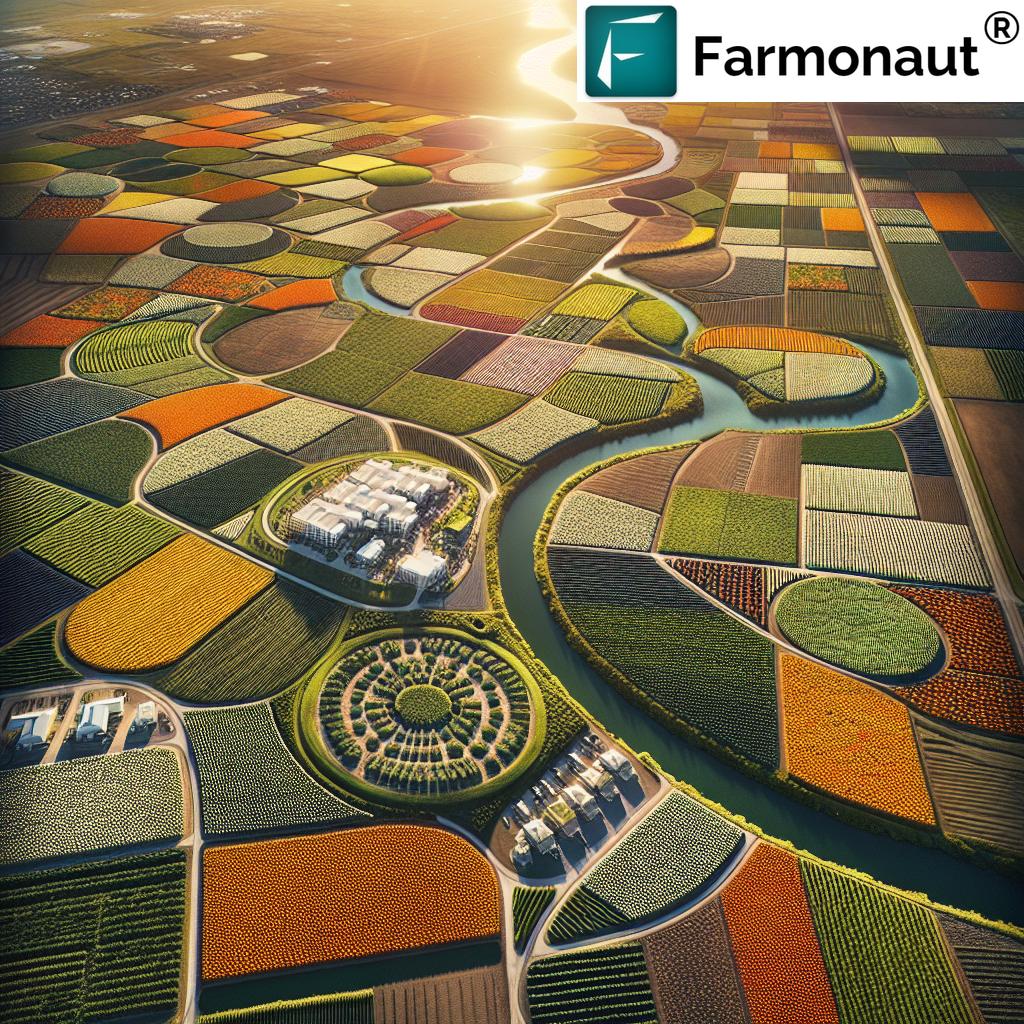Cape Coral Burrowing Owls: 5 Powerful Ways to Protect Habitat
“Cape Coral is home to over 3,000 burrowing owl burrows, making it Florida’s largest urban owl population.”
Table of Contents
- Introduction: Cape Coral’s Burrowing Owls
- Our Vibrant Burrowing Owl Habitat in Florida
- Why Do Burrowing Owls Thrive in Cape Coral?
- Counting Cape Coral’s Burrowing Owls
- 5 Powerful Ways to Protect Burrowing Owl Habitat in Cape Coral
- 1. Land Acquisition and Set-Asides
- 2. Artificial Burrow Installations
- 3. Native Landscaping and Habitat Restoration
- 4. Community Awareness & Education Campaigns
- 5. Data-driven Monitoring & Volunteer Engagement
- Burrowing Owl Conservation Actions & Impact Table
- Spring & Summer: Bird Watching in Cape Coral
- Technology for Conservation: Leveraging Farmonaut
- Supporting Sustainable Agriculture & Conservation Initiatives
- FAQ: Cape Coral Burrowing Owls
- Conclusion: Our Shared Responsibility
Introduction: Cape Coral’s Burrowing Owls
Nestled in the sun-drenched landscapes of Cape Coral, Florida, we find one of the state’s most remarkable wildlife icons: the burrowing owl (Athene cunicularia). These small, charismatic birds aren’t just another urban anecdote. With the city now supporting over 3,000 burrow sites and upwards of 5,000 owls, Cape Coral has become Florida’s largest urban sanctuary for these unique creatures. Our thriving owl population embodies the spirit of community-driven conservation—and their protection is a testament to what’s possible when residents, volunteers, and agencies unite for wildlife.
In this comprehensive guide, we delve into the heart of wildlife conservation in Cape Coral. We’ll explore how the city, local trust organizations, and dedicated volunteers safeguard burrowing owl habitat Florida, the ecological history behind the city’s success, and—most importantly—five powerful, impactful ways we can all protect this vital urban bird habitat.
“Volunteers install more than 200 artificial burrows annually to support Cape Coral’s endangered burrowing owl nesting sites.”
Our Vibrant Burrowing Owl Habitat in Florida
Cape Coral burrowing owls find a unique home here, but what makes our land so special? For millennia, these diminutive birds thrived on Florida’s open prairies, especially in central Florida, where wide-open lands and sandy soils allowed them to dig deep and create extensive nesting networks in the ground. However, with extensive development and urban expansion in the past century, natural owl habitats diminished across much of the state.
Surprisingly, our city’s transformation—once driven by developers who cleared open lands and built canals to drain what was once wet prairie—resulted in exactly the type of habitat these birds now rely on. The result: vast stretches of sugar sand lots and open spaces right in the heart of our neighborhoods, ideal for urban bird habitat preservation. Cape Coral now boasts over 10 acres of acquired and protected lands specifically set aside for this purpose, owned by groups like the Cape Coral Wildlife Trust.
As we reflect on the importance of protecting wildlife habitats, it’s clear that active stewardship—rather than passive luck—has made this outcome possible. The ongoing commitment from the state agency (FWC), trusts, volunteers, and our community remains vital.
Why Do Burrowing Owls Thrive in Cape Coral?
Let’s examine exactly why our city is among the best places in the state for burrowing owl nesting season success. A combination of geographic and environmental factors turns Cape Coral into a prime avian real estate market:
- Open sandy soils: The city’s defining sandy soil wildlife areas are easily excavated—a major advantage for these ground-nesting birds.
- Low, grassy lots: The grass height and lack of dense trees mimic historic open prairies.
- Scattered development: New construction leaves behind vacant lots, ideal for burrowing owl habitat.
- Community-driven conservation: Our residents and volunteers actively support urban bird habitat preservation, building trust and understanding between people and wildlife.
- Collaborative protection actions: Initiatives from the Cape Coral Wildlife Trust, Friends of Wildlife, and support from FWC grants ensure proper stewardship of these vital spaces.
This synergy of geography, community action, and generous conservation funding through entities like the Florida Fish and Wildlife Conservation Commission (FWC) keeps the city’s owl population strong and growing.
Counting Cape Coral’s Burrowing Owls
Before we explore actionable steps, let’s appreciate the scale of our efforts. Each year, dedicated volunteers organize events to count these iconic birds across the cape. This isn’t just a labor of love—it’s a crucial strategy for understanding population trends, directing conservation funding, and keeping local, state, and city agencies involved and informed.
The official count now regularly surpasses 5,000 owl individuals, a testament to how a vibrant urban community can support thousands of ground-nesting birds. Our mapping uses GPS data, ensuring every nest, burrow, or family is charted for ongoing protection and monitoring. This network allows city inspectors to respond quickly if a site is disturbed.
From the earliest days when only a handful of residents tracked these birds with nothing more than handwritten notes and simple maps, Cape Coral has grown into a model for urban bird habitat preservation.
5 Powerful Ways to Protect Burrowing Owl Habitat in Cape Coral
Based on our local successes and expert recommendations in wildlife conservation in Cape Coral, here are five formidable methods to ensure flourishing burrowing owl habitat Florida—backed with proven results and actionable guidance:
1. Land Acquisition and Set-Asides
Acquiring open lots is the foundation of effective habitat protection. Organizations like the Cape Coral Wildlife Trust have secured 81 lots—covering about 10 acres of prime habitat—to ensure owls and other native flora and fauna have a permanent refuge in the heart of Southwest Florida.
- Purchase of lots is often enabled by grant monies from the Florida Fish and Wildlife Conservation Commission (FWC).
- Lot purchases consider ecological value (proximity to other nests, sandy soils, prior owl activity).
- Permanent conservation status of these lands protects them from future development or landscaping that would make them unsuitable for owl nests.
Community tip:
Encourage neighborhood involvement by supporting local land trusts and advocating for conservation-minded policies with your city government. The more acreage dedicated, the healthier our owl populations will be!
2. Artificial Burrow Installations
Artificial burrow programs have revolutionized urban bird habitat preservation here in Cape Coral:
- Each year, volunteers install over 200 artificial burrows across parks, open spaces, and even private lots with landowner permission.
- Artificial burrows mimic the natural nesting substrate—especially useful in places where natural burrow sites are compacted or lost to development.
- They increase nesting success, allow owls to colonize new areas, and make population spread more feasible.
Volunteer insight:
Installation and monitoring are ideal ways for citizens of all ages to get involved! Tools are simple: a post-hole digger, PVC pipe, and a bit of sandy soil. Several local workshops teach installation methods each spring.
3. Native Landscaping and Habitat Restoration
Purposeful landscaping with native grasses and restoration of traditional Florida open prairies birds environments are critical. Here’s how we help:
- Maintain or plant native, low-growing grasses (sandy soil wildlife areas attract prey and don’t impede owl burrow entry points).
- Avoid heavy mulching or sod over open lands—these prevent owls from creating natural burrows.
- Remove invasive vegetation and restore historical prairies for long-term urban wildlife conservation.
- Encourage homeowners to participate by keeping their lots “owl-friendly,” especially during nesting season.
Environmental advice:
If you’re a homeowner or landscaper, follow the “mow low and let it grow” practice and avoid using pesticides near owl sites.
4. Community Awareness & Education Campaigns
Our collective urban conservation work succeeds only when our community is informed and invested:
- Organizations conduct awareness days, school presentations, and citizen science projects—these boost support for protecting wildlife habitats and owl-friendly policies.
- Local government includes burrowing owl protection in city planning efforts, thanks to consistent community engagement.
- Residents learn how to spot, report, and protect active owl nests—making everyone a potential guardian during burrowing owl nesting season.
Outreach tip:
Share news of successful conservation projects through social media or neighborhood newsletters to inspire wider action.
5. Data-driven Monitoring & Volunteer Engagement
Accurate data is the backbone of every urban wildlife conservation success. Here’s how we collect and use it:
- A network of 400+ volunteers contribute nearly 10,000 hours per year, managing everything from nest surveys to education booths at city events.
- We use GPS to mark each owl nest location, maintain real-time mapping, and track seasonal trends. If a site’s status changes, a quick inspection ensures owl safety.
- Community-led counting events work hand-in-hand with agency and city data, offering a comprehensive overview of burrowing owl habitat Florida.
Want to put your passion to work?
Joining a volunteer survey, mapping session, or nest inspection team is one of the best ways to make a difference in Cape Coral.
Burrowing Owl Conservation Actions & Impact Table
| Conservation Action | Description | Est. Number of Owls Protected | Est. Volunteer Hours Needed | Environmental Benefit |
|---|---|---|---|---|
| Land Acquisition/Set-Asides | Purchase & protect vacant lots as owl habitat | ~2,000+ | 600/year | 10 acres protected from development |
| Artificial Burrow Installation | Construct/install 200+ burrows annually | 400–600 nests annually |
900/year | Increased nest success; new colonies |
| Native Landscaping | Grassy/low maintenance wildlife areas | Whole city |
2,000+ | Ecological restoration; support for prey |
| Community Awareness | Education, advocacy, outreach | All 5,000+ owls | 1,800/year | Reduced disturbances, long-term support |
| Volunteer Data Monitoring | Annual counts, nest GPS records, surveys | Directly: ~1,500; Indirect: all | 3,000+/year | Adaptive management, research data |
Spring & Summer: Bird Watching in Cape Coral
Cape Coral is a hotspot for bird watching—especially in spring and early summer, when owl chicks emerge and families are most active. It’s the ideal time for locals and visitors alike to observe Florida’s official “city bird” and celebrate the success of our conservation efforts in the nesting season.
- During May and June, young owls frequently poke their heads out of burrows—watch for their fluffy white chests.
- These months see a flurry of volunteer wildlife efforts Florida, from certified counts to family-friendly birding events.
- If you’re a bird watcher, observe from a respectful distance using binoculars and remember never to disturb active nests or approach burrows closely.
This visibility fosters public reverence and deepens support for ongoing owl protection initiatives.
Technology for Conservation: Leveraging Farmonaut
Modern conservation requires more than traditional boots-on-the-ground efforts. Advanced technologies are rapidly transforming both urban bird habitat preservation and large-scale wildlife conservation in Cape Coral. That’s where Farmonaut comes in.
- Satellite-based monitoring: By utilizing multispectral satellite imagery, Farmonaut empowers conservationists, land managers, city planners, and land trusts to monitor vegetation changes, habitat health, and soil moisture—all vital metrics for sustaining burrowing owl habitat Florida.
- Real-time advisory systems: Farmonaut’s AI-driven Jeevn AI Advisory System provides weather forecasts and crop health analytics directly to the mobile devices of land managers or volunteers working to restore owl habitat.
- Blockchain traceability: Farmonaut’s product traceability solutions bring complete transparency to sourcing habitat restoration materials or ensuring the ecological integrity of purchased conservation lands.
- Fleet/resource management: Conservation organizations optimize field operations, track vehicle use, and coordinate volunteers using Farmonaut’s advanced management tools, reducing costs and maximizing volunteer impact.
- Carbon footprint tracking: Farmonaut supports sustainability by providing carbon monitoring and reduction capabilities. This is essential for conserving open lands while keeping emissions low.
For those involved in both agricultural and non-profit conservation, Farmonaut’s technology is a catalyst for action—offering affordable and accessible data-driven insights, increasing productivity, and accelerating sustainable initiatives. Explore Farmonaut’s API for developers and organizations seeking seamless integration of habitat and agricultural remote sensing.
Need more technical detail? Check out the API Developer Docs.
Affordable Data-Driven Solutions for Everyone: Farmonaut Subscriptions
Below you’ll find secure, real-time pricing and packages for accessing Farmonaut’s suite of innovative solutions:
Supporting Sustainable Agriculture & Conservation Initiatives
The synergy between habitat conservation and sustainable agriculture is powerful. Key actions that benefit both burrowing owls and local ecosystems include:
- Conserving and restoring open lands benefits not only birds but also enhances water management, boosts soil fertility, and improves carbon sequestration in the region.
- Using smart resource management tools, as provided by Farmonaut, can help residents and conservationists allocate water and nutrients more efficiently—helping both crops and wildlife habitats flourish.
- When restoring landscapes, always prioritize native species, avoid synthetic chemicals, and maintain open patches necessary for ground-nesting species.
Committing to these best practices not only protects Cape Coral’s beloved burrowing owls—but helps build a more resilient, healthy Florida for generations to come.
FAQ: Cape Coral Burrowing Owls
What is the primary focus of burrowing owl conservation in Cape Coral?
The focus is on acquiring and managing open lands, installing artificial burrows, restoring native landscapes, raising community awareness, and collecting detailed data through volunteer monitoring. All these collectively ensure safe nesting sites and a thriving population.
Why is Cape Coral’s habitat so important for Florida burrowing owls?
The city offers extensive sandy soils and open grassland due to historical land development, which are perfect for ground-burrowing bird species. With thousands of burrows and 10+ acres set aside for conservation, it’s the largest urban owl sanctuary in Florida.
How can I get involved in protecting burrowing owl habitats?
Join local trusts, participate in nest counts, sponsor artificial burrow installation, maintain owl-friendly landscaping, or use modern tools like Farmonaut’s data-driven app to support both urban and rural conservation actions.
When is the best time for bird watching Cape Coral burrowing owls?
Spring and early summer are best—the burrowing owl nesting season brings newly hatched chicks out of burrows. Always observe from a distance to prevent disturbance.
What Farmonaut tools help with wildlife conservation efforts?
Farmonaut offers satellite-based habitat monitoring, AI-driven advisory, blockchain traceability for restoration materials, fleet/resource management for large teams, and carbon footprint tracking for sustainable practices.
Conclusion: Our Shared Responsibility
Cape Coral’s burrowing owl story exemplifies what’s possible when city planners, residents, volunteers, land trusts, and technology advocates join forces for wildlife conservation. Our efforts—acquiring acreage, installing nest boxes, restoring prairies, educating the community, and leveraging advanced tools like Farmonaut—offer a sustainable blueprint for urban bird habitat success.
As we move forward, let’s continue to count, care for, and protect our thriving owl population. Whether you volunteer, advocate, monitor habitat with apps, or simply share your passion for these charming birds, remember: Cape Coral’s burrowing owls belong to all of us. Together, we ensure that this defining feature of Florida’s open lands endures for decades to come.
Join us—let’s make Cape Coral a beacon for urban wildlife, sustainability, and hope!


